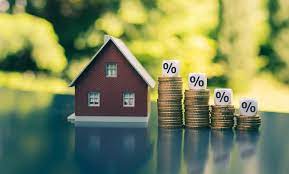By: ADMIN |
2023-03-10 00:12:38

I have been looking to buy a house in Leeds, my home city. Prices are still high, but I can’t wait anymore. I did my searches and managed to find a few good options. The numbers looked good and the mortgage approval came through in time. Except for one major issue that put the dampener on the works. The rate offered to me is 6.7%, much higher that 4.49% that we are used to here in UAE. Tables seem to have turned, and this is first time in a long time that investing is UAE is much more profitable than investing in UK. So what has happened?
Interest rates on UAE mortgages are generally led by EIBOR, a bench mark rate under which UAE banks lend to each other. Since Dirham is pegged to the dollar, Eibor tends to follow the US Fed rate. In January this year the US Fed-Funds rate was 0.08%, Eibor was 0.44%. By March this rate had risen to 0.58% and Eibor was at 1.03%. June saw US Fed-Funds rate at 1.5% while Eibor rose to 1.87%. US rates jumped to 2.33% in September and Eibor stood at 3.55%. US rates are now at 3.08% while Eibor stands at 4.08%.
What was happening to the mortgage rates meanwhile! Well, the 30-year fixed, which is a benchmark mortgage rate in US, stood at 3.4% in January, and a typical 3-year fixed in UAE was at 2.49%. By June US rates had risen to 5.7%, UAE rates were at 3.99%. October has US rates risen to 6.9%. A typical 3-year fixed mortgages in UAE stands at 4.49%. Now the interesting part - the margins the UAE banks charge over Eibor has fallen from 2.25% in January to 1.5% in October. Clearly the UAE banks are flush with liquidity, pushing them to lend more.
As per Moody’s UAE banks’ liquid assets are at 38 per cent, up from 36 per cent in December 2020. Moody’s has revised the outlook for the banking system to stable from negative. Moody’s said “Bank’s profitability will remain stable and capital buffers will stay solid. Higher oil prices will support banks’ funding and liquidity. The UAE government’s willingness and capacity to support local banks if needed will remain high over the next 12 to 18 months,”. Moody’s projected that real GDP will grow by 6.3 per cent in 2022 and 4.0 per cent in 2023, with the non-hydrocarbon economy growing by 4.4 per cent and the hydrocarbon sector by 11.4 per cent as oil production returns to pre-pandemic levels.